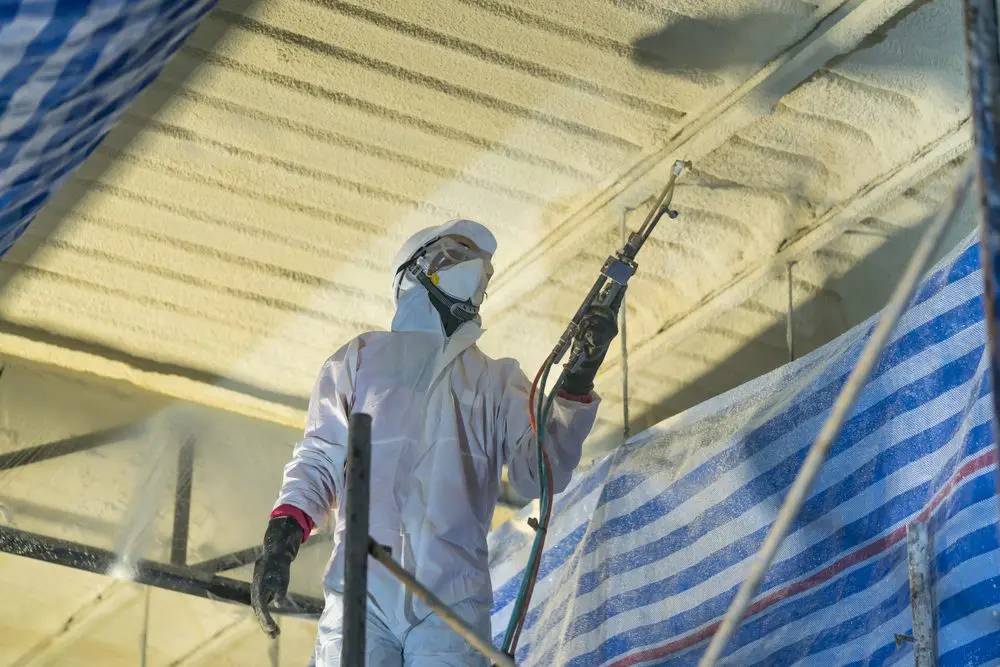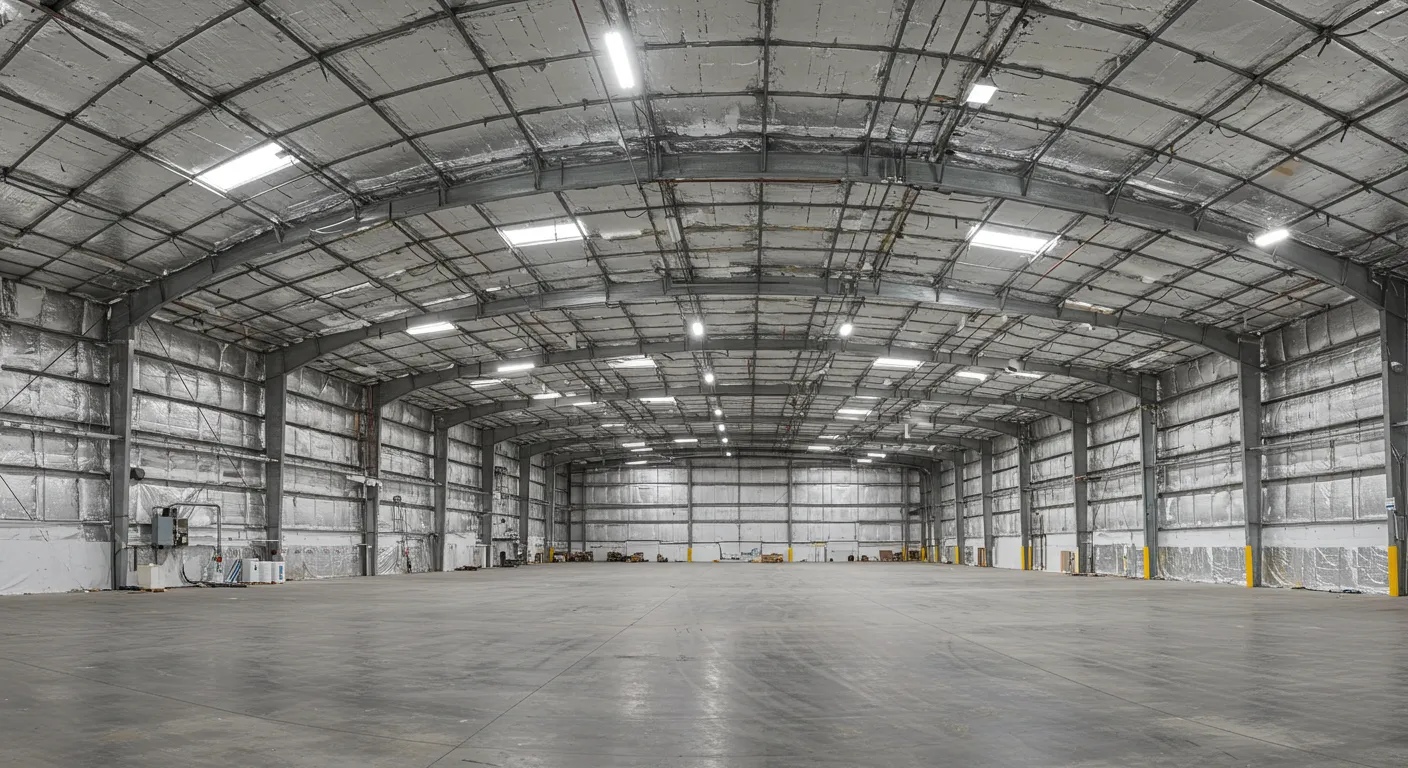Insulation plays a measurable role in how heating and cooling systems perform across commercial properties. For property managers, energy consultants, and business owners, reducing HVAC strain directly improves utility costs, equipment longevity, and interior comfort. This article breaks down the core functions of commercial insulation, how it affects HVAC performance, and what facility types benefit the most from expert commercial insulation service.
How Insulation Impacts HVAC Load in Commercial Facilities
Proper insulation helps HVAC systems maintain consistent indoor temperatures without overworking. This section outlines the insulation-to-HVAC relationship in terms that reflect energy system behavior and heat flow patterns in large buildings.
Heat Transfer Reduction
Insulation slows the movement of heat between indoor and outdoor environments. The goal is to minimize seasonal heat gain in summer and heat loss in winter.
- In winter, insulation retains warm air generated by the furnace or heat pump.
- In summer, it blocks outside heat from penetrating the interior.
Reducing these losses means HVAC systems cycle less often and maintain set temperatures with less energy input.
Air Leakage Control
Unsealed gaps and penetrations around ceilings, walls, ducts, and penetrations create airflow imbalances that force HVAC systems to compensate.
High-performance insulation systems:
- Seal off conditioned space
- Reduce infiltration and exfiltration
- Maintain indoor pressure balance
Less air movement means heating and cooling systems respond with fewer output spikes, especially in multi-zone buildings.
HVAC Sizing and Runtime Optimization
Buildings with poor insulation require larger HVAC systems or longer runtimes to meet the same temperature targets. Improved insulation lowers:
- Required system tonnage
- Compressor cycling
- Fan operation duration
HVAC loads drop when buildings need less active temperature correction, reducing utility costs and mechanical wear.
Types of Commercial Insulation Materials and Their Effects
Selecting the right insulation material affects both the performance of the HVAC system and the building envelope’s durability. This section reviews material types used in commercial facilities and their influence on load reduction.
Closed Cell Spray Foam
Closed cell spray foam insulation offers both high R-value and moisture resistance, making it ideal for commercial building envelopes.
- Rigid structure adds structural strength
- High R-value per inch (R-6 to R-7)
- Acts as a continuous air and vapor barrier
This dual-performance profile makes it one of the most effective choices for reducing HVAC workload in mixed-climate zones.
Rigid Foam Board
Often used in roofs and exterior sheathing, rigid foam board delivers consistent thermal resistance in flat applications.
- Good for retrofitting roofs and curtain walls
- Resists moisture and compressive forces
- Reduces thermal bridging on metal frames
Mineral Wool
Mineral wool is a non-combustible, vapor-permeable option commonly used in commercial walls.
- Maintains thermal performance when wet
- Offers sound attenuation in noisy facilities
- Compatible with continuous insulation systems
While it doesn’t offer the air sealing of spray foam, its thermal consistency supports HVAC efficiency when layered correctly.
Building Types That Benefit Most from HVAC Load Reduction
Certain commercial properties have more to gain from insulation upgrades due to their layout, usage patterns, or HVAC configurations.
Warehouses and Industrial Buildings
Large volume structures lose energy rapidly if uninsulated. Insulation:
- Reduces the volume of air the HVAC must condition
- Prevents stratification of warm and cool air layers
- Improves thermal consistency along perimeter walls
Office Buildings with Zoned HVAC Systems
Office buildings often have multiple HVAC zones. High-performance insulation:
- Minimizes temperature swings between zones
- Reduces overcompensation by thermostats
- Supports smart control systems and energy dashboards
Hospitals and Healthcare Facilities
Temperature stability is mission-critical. Insulation:
- Helps maintain medical-grade indoor air conditions
- Reduces microbial risk from condensation on ducts and surfaces
- Supports precise HVAC calibration in operating and patient rooms
Signs That HVAC Load Is Too High Due to Poor Insulation
Facility managers can often identify insulation-related inefficiencies based on HVAC behavior or environmental symptoms. These indicators suggest that the HVAC system is overcompensating for thermal leaks.
Constant Thermostat Adjustments
Frequent changes in temperature settings often signal:
- Temperature imbalances between zones
- Overactive heating/cooling cycles due to thermal loss
- Delayed temperature stabilization
High Utility Bills Despite Modern HVAC
Energy audits often reveal that HVAC efficiency drops in buildings with:
- Poorly insulated ductwork
- Missing insulation in ceiling or attic cavities
- Low R-value exterior walls
Uneven Temperatures Across Building Areas
Cold or hot spots indicate uncontrolled heat movement, which suggests:
- Air leakage through poorly sealed envelope components
- Missing or degraded insulation in critical wall sections
- Improperly insulated penetrations or floor systems
Comparison: HVAC Load With vs. Without Quality Commercial Insulation
| Feature | Poor Insulation | Quality Commercial Insulation |
|---|---|---|
| Energy Use | High due to heat loss/gain | Lower from thermal resistance |
| HVAC Runtime | Extended, frequent cycling | Reduced operation times |
| Equipment Longevity | Shorter due to overuse | Longer lifespan from efficiency |
| Indoor Comfort | Uneven, draft-prone | Consistent, controlled environment |
| Utility Costs | Higher year-round | Decreased monthly energy bills |
| Air Leakage | Significant | Minimized with sealed barriers |
How to Approach Insulation Upgrades for HVAC Efficiency
Insulation upgrades should follow a building-specific assessment to determine where HVAC performance is being compromised.
Conduct an Energy Audit First
Before insulation is added or replaced:
- Inspect envelope for air leakage
- Test R-values in roof and wall systems
- Review HVAC performance logs and energy bills
These data points identify problem zones and quantify the HVAC load impact.
Target High-Impact Zones
Focus insulation upgrades on:
- Attics and roofs (major heat gain/loss zones)
- Walls facing high solar exposure
- Floors above unconditioned spaces
Sealing these areas helps immediately reduce HVAC strain.
Select Materials Based on Envelope Design
Material selection should reflect:
- Roof pitch and slope
- Framing layout
- Exposure to moisture or fire risks
For example, flat commercial roofs often perform better with spray-applied or rigid board insulation due to continuity and moisture protection.
Conclusion
Commercial insulation directly affects how efficiently HVAC systems operate. When installed correctly, insulation slows down thermal transfer, prevents air leakage, and reduces unnecessary heating or cooling cycles. These factors contribute to measurable energy savings, more predictable comfort, and longer-lasting HVAC equipment.
Facility managers and business owners who invest in professional insulation upgrades gain long-term control over their operating expenses. Whether in warehouses, offices, or healthcare facilities, managing HVAC load through envelope improvements delivers both economic and operational value.
FAQs
How does spray foam insulation affect HVAC efficiency in commercial buildings? Spray foam provides both thermal resistance and air sealing, reducing HVAC runtime. Its tight envelope control helps stabilize indoor temperatures across multiple zones.
Can poor insulation really cause HVAC system failure? Yes. HVAC systems that operate under strain due to heat loss or air leaks wear out faster. Over time, motors, compressors, and ductwork may fail prematurely.
Which insulation material works best for metal commercial buildings? Closed cell spray foam is often ideal for metal buildings because it adheres to surfaces, adds rigidity, and prevents condensation, all while maintaining high R-values.
What is the fastest way to lower HVAC energy costs in older facilities? Seal air leaks, insulate attics and walls, and assess duct insulation. These upgrades quickly reduce heating and cooling demand, often without replacing HVAC equipment.
Do HVAC loads decrease immediately after insulation upgrades? Yes, in most cases. Once insulation barriers are in place, temperature retention improves quickly, and HVAC systems cycle less to meet the same settings.
Reviewer: Jacob Wright has 6 years of experience in spray foam insulation. He reviewed this content and made sure it focused on the real decisions small business owners deal with every day.











